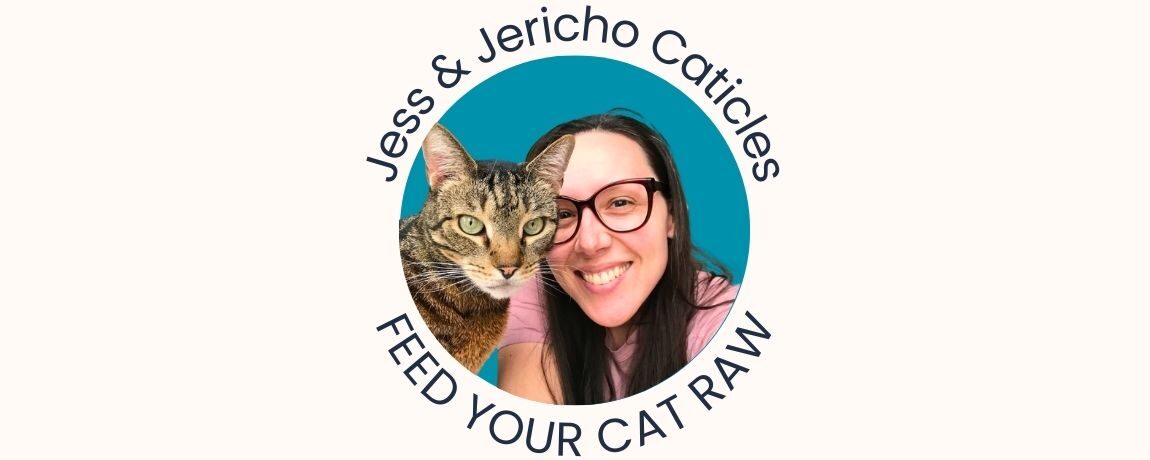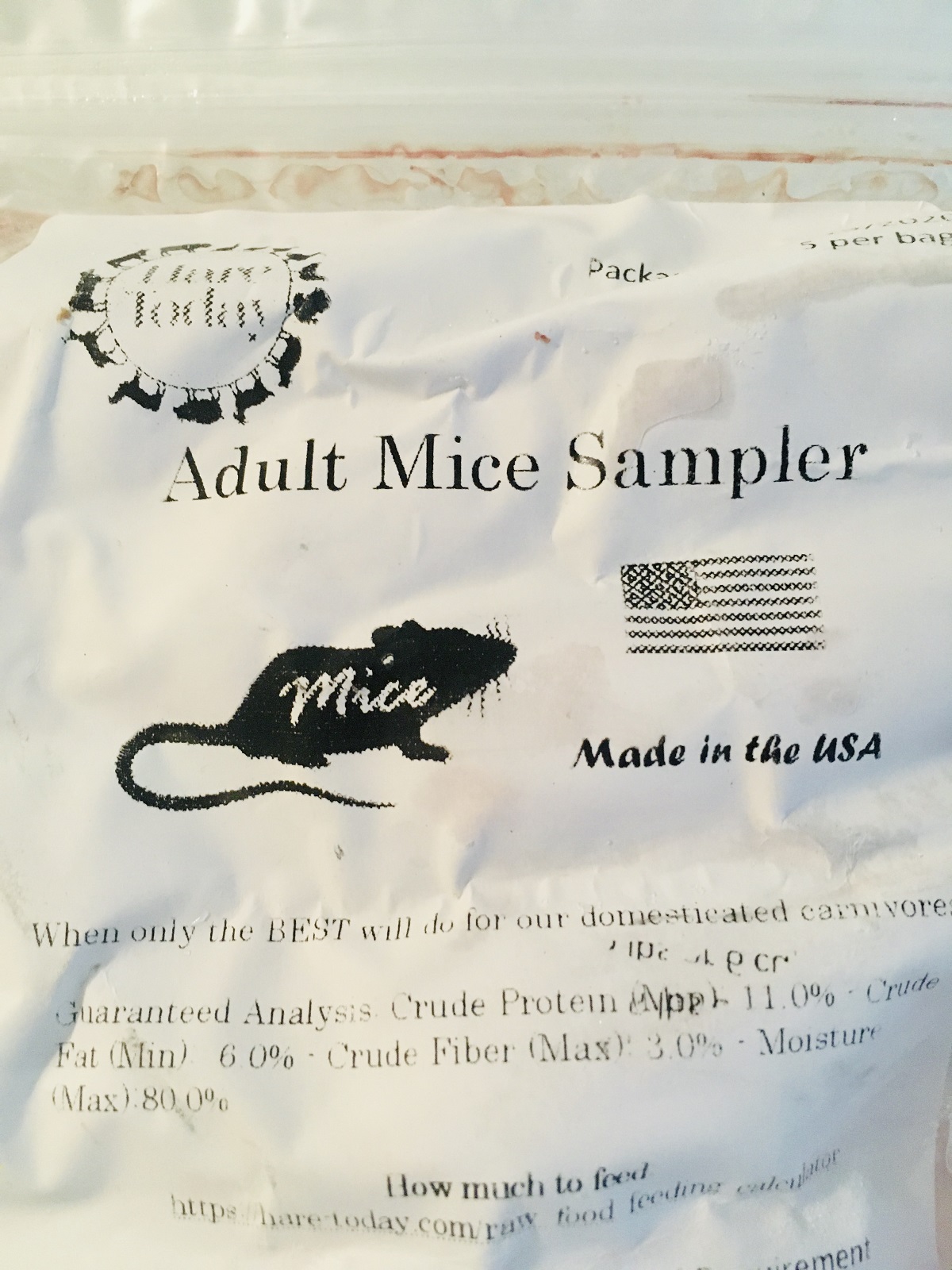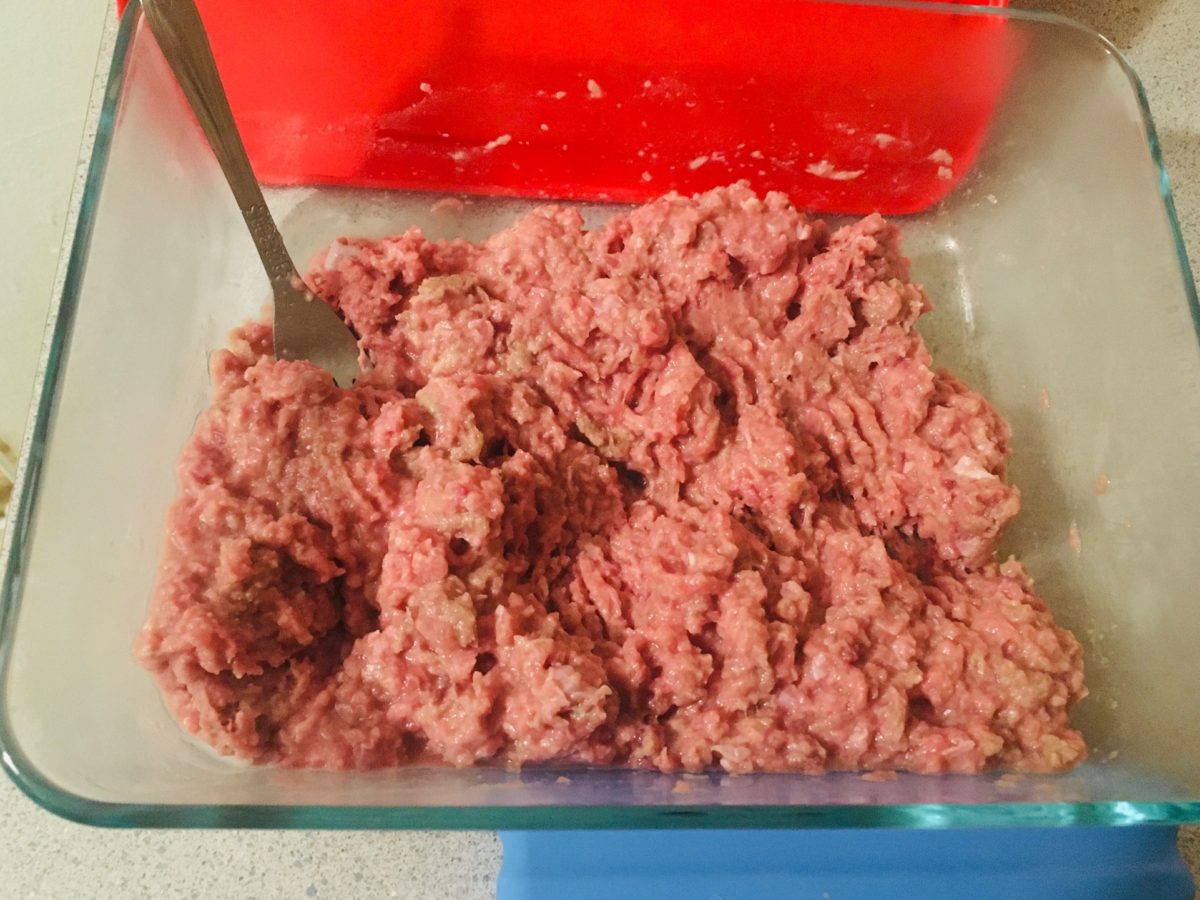Yes, cats need meat because they are obligate carnivores. Meat provides all the essential nutrients that your cat needs.
Cats cannot convert plant material into the essential nutrients they need to survive. There is no such thing as a vegan cat. Without meat nutrients, your cat will not thrive.
Here’s exactly why cats need meat:
Check out this guide today or save THIS PIN to your Cat Food board on Pinterest.
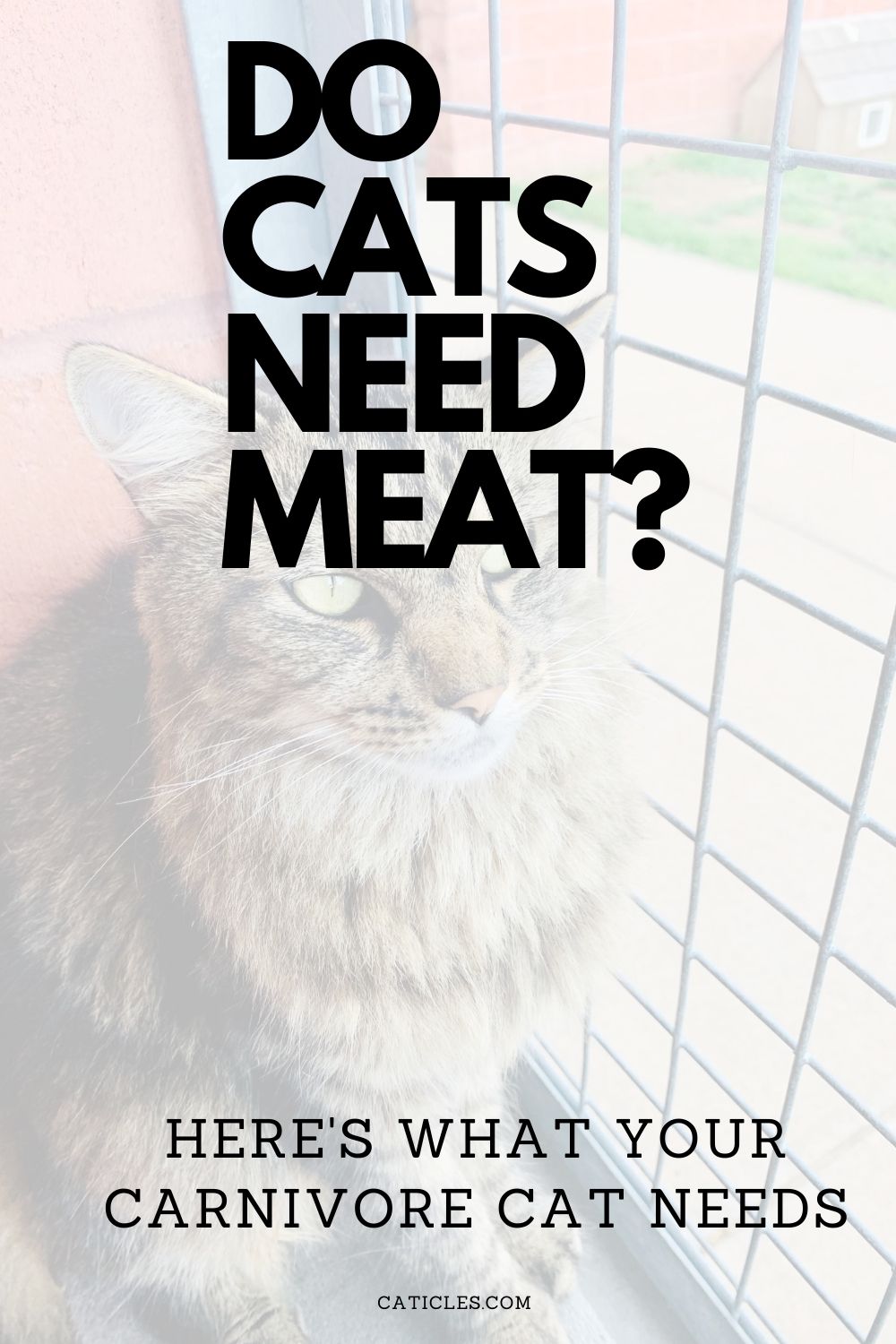
Disclaimer: I earn a commission if you purchase through affiliate links below. No additional cost to you!
PS – If you’re ready to ditch high carb kibble for a species-appropriate raw diet, my Switch to Raw Blueprint digital magazine is for you!
My Switch to Raw Blueprint digital magazine includes my proven food transition plan, healthy treats & topper recommendations to enhance meals, best cat food brands I feed and recommend as a pet nutritionist, and so much more so you can switch your cat to a healthy premade raw diet easily and confidently.
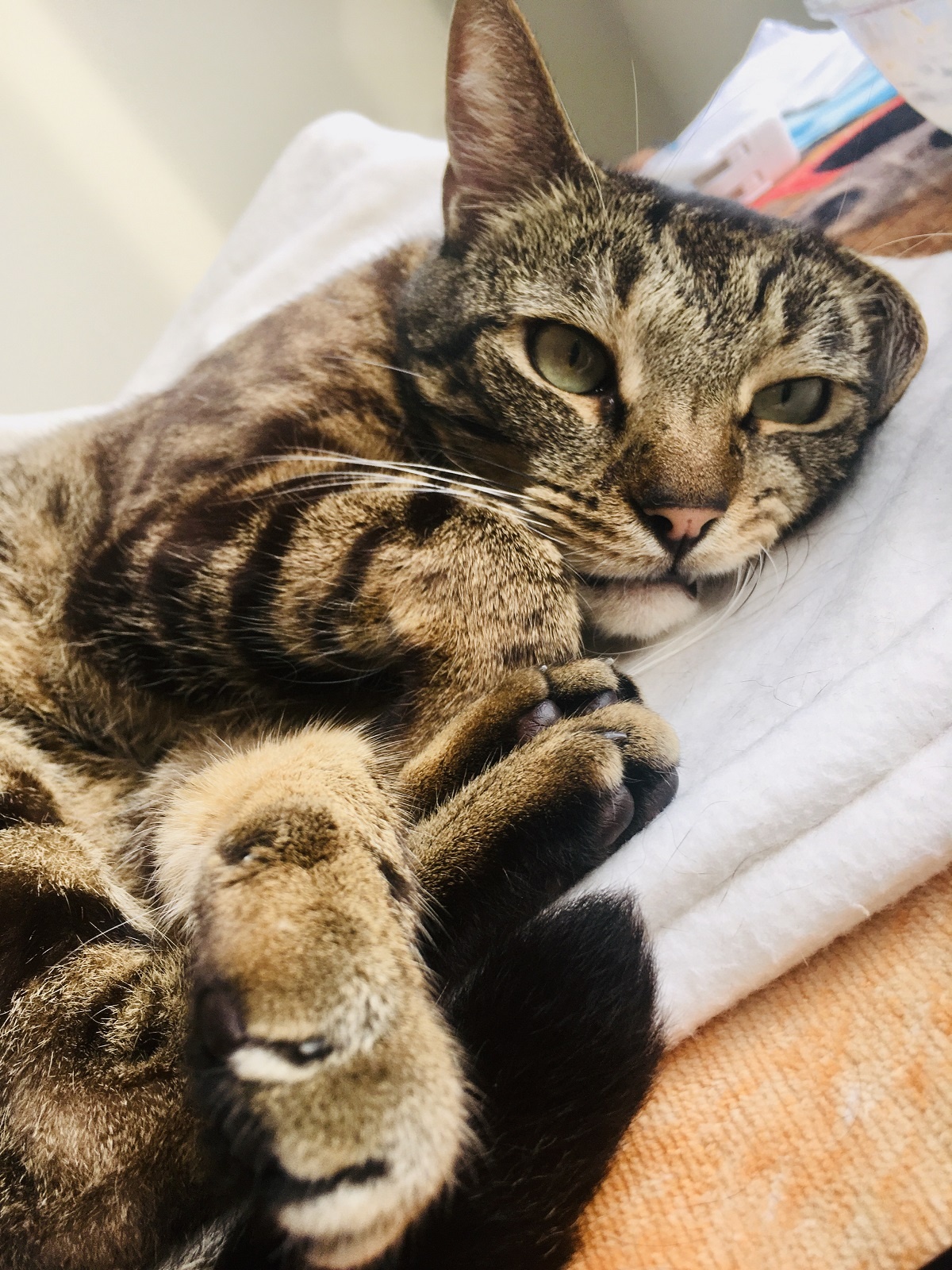
External design
Eyes
The cat’s eyes are designed to see very well in low light. Mice and other small prey are most active and dawn and dusk.
So the cat’s eyes are built to hunt when their natural prey are most active.
Ears
The cat’s ears can hear a much broader range of frequency than humans can. Mice squeak and make high-pitched sounds.
Cat ears are built to hear these sounds for proper hunting.
Nose
The cat’s nose has around 40x more odor-sensitive cells than the human’s nose.
This helps the cat sniff out their prey.
Whiskers
Whiskers have nerve endings, and cats can move them forward and back. The whiskers help cats detect movement while they hunt.
Cats can’t see well up close. We can’t see well up close either.
Try testing it out. Put your finger right in front of your nose and try not to get dizzy.
The cat’s whiskers let them know when prey is within reach.
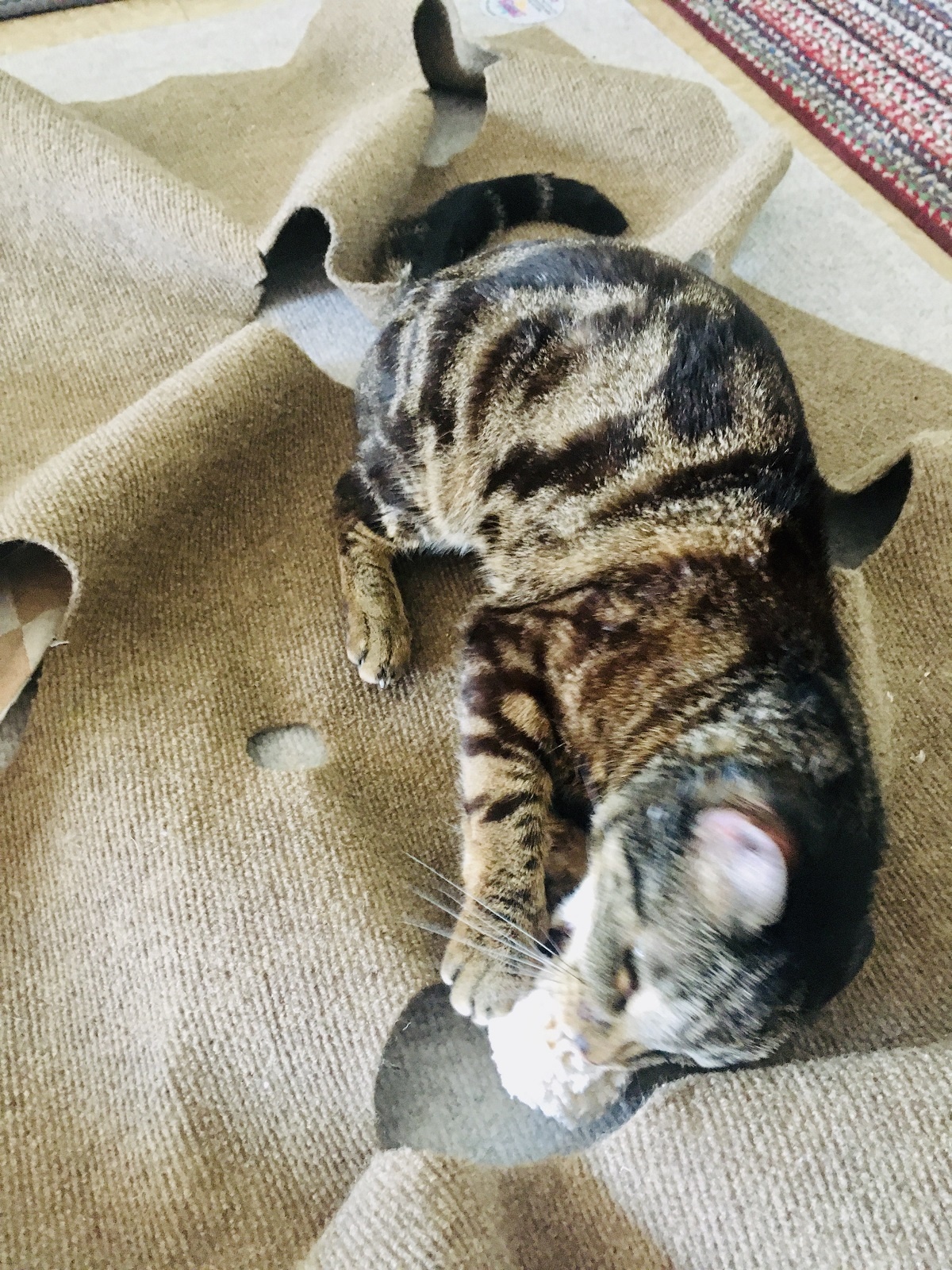
Claws
Cat’s claws are sharp and retractable. The claws are designed to grip prey before they kill.
Teeth
Cat teeth are sharp and serrated. They are designed to chop meat and bones into smaller pieces.
Herbivore premolars and molars are flat. These teeth are designed to grind plant matter.
All of the cat’s teeth are sharp and serrated.
If cats were meant to eat plants, they’d have flat premolars and molars like us.
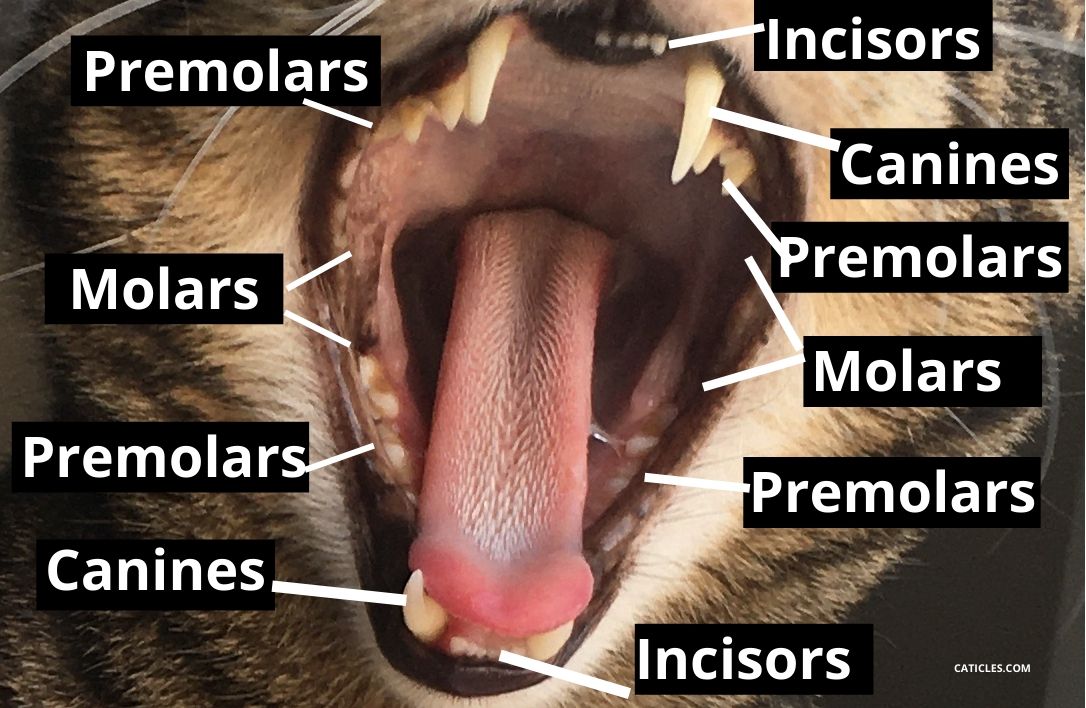
Jaw
The cat’s jaw moves vertically only. Our jaw moves vertically and horizontally.
Herbivores have the same jaw motion as we do. This design allows us to grind down our food.
Carnivore jaws, however, cannot grind down food as small as we do.
Their jaws are designed to cut meat and bone into smaller pieces. Then those pieces are swallowed whole.
Internal design
Enzymes
Lysozyme is an enzyme that destroys bacteria. It attacks the cell walls of gram-positive bacteria. Lysozyme is found in saliva.
Naturally, the cat’s mouth is designed to process potential bacteria found in raw food.
Amylase is another important enzyme. It is responsible for digesting carbohydrates.
We have amylase in our saliva, but cats do not. This further proves that carbohydrates are no good for cats.
Cats cannot digest carbs in their mouth. This forms a starchy residue on their teeth and can lead to poor dental health.
Short digestive tract
The cat’s digestive tract is 4x the length of its body. For reference, a rabbit’s digestive tract is 10x the length of its body.
Rabbits are herbivores. Cats are carnivores.
A short digestive tract allows the cat to digest and excrete raw materials quickly before bacteria can thrive.
Acidic stomach
The cat’s stomach is naturally highly acidic. It ranges from 1-2.5. This highly acidic environment helps fight bacteria and pathogens.
Even if you don’t feed a raw diet, think about this…
Your cat licks his butt after he poops. Let that sink in.
It is crucial that your cat’s stomach is acidic.
Kibble is bad for cats because it’s high in carbohydrates. This sets up your cat for many health problems.
Gastric acidity is your cat’s natural line of defense.
Feeding your cat dry food only can cause serious health problems.
Essential nutrients
Water
Cats evolve from desert dwellers. They rely on food for moisture.
According to the USDA, muscle meat is approximately 75% moisture.
My cat’s whole prey mice are 80% moisture.
Kibble is only 10% moisture.
Even if your cat drinks a lot of water, he needs moisture from his food.
Remember to clean your cat’s water bowls regularly to prevent pink residue bacteria buildup.
Crude protein
Cats require animal-based protein in their diet. They need amino acids for good health.
Each plays a significant role and cats need a very specific amount.
Cats cannot synthesize these nutrients on their own.
Imbalances in the diet can result in many health issues.
Cats need meat in their diet to provide these essential nutrients.
Arginine
Arginine is used by cats to process urea. Deficiencies in this amino acid result in ammonia toxicity.
You’ll notice drooling, vomiting, and lethargy. A serious deficiency will lead to death.
Arginine is abundant in meat. So if you’re feeding meat-only meals, your cat will get enough Arginine.
Lysine
Lysine is often used as a treatment for the feline herpes virus. The herpes virus thrives on arginine.
Lysine helps starve the virus cells.
Methionine
Methionine and Cysteine are converted to glucose and provide energy.
Threonine
Threonine helps prevent fat buildup in the liver.
Tryptophan
Tryptophan is a precursor to niacin (Vitamin B3), and a deficiency can shorten your animal’s life.
Taurine
Taurine, technically an amino sulfonic acid, is responsible for heart and eye health, good immune function, digestion, fetal development, and helps the brain and nerves.
Cats are unable to synthesize taurine themselves so it must be provided by their diet.
Taurine is water-soluble so there is no concern for overdose.
Taurine is found in muscles that work hard like the heart and thigh. It’s also found in the liver.
Plants do not contain taurine.
In the ’80s, one of the leading causes of death in cats was dilated cardiomyopathy. This was linked to pet food diets being too low in Taurine.
Instead of adding more meat to pet foods, manufacturers added Taurine as a supplement.
Taurine deficiencies take months and even years to show symptoms.
Without Taurine, cats can go blind, experience reduced fertility in female cats, abnormal developments in kittens, and heart issues.
Other essential amino acids include:
Unfortunately, there is very little information out there aside from listing them as essential.
Natural sources of amino acids:
- Egg (except for Taurine)
- Duck
- Beaver
- Lamb
- Fish
- Boar
- Deer
- Elk
- Goat
- Buffalo
- Beef
- Bison
- Pork
- Chicken
- Goose
- Guinea Hen
- Quail
- Pheasant
- Ostrich
- Turkey
Crude fat
Fat provides twice as much energy as protein and carbohydrates. It also provides essential fatty acids.
Fatty acids
EPA and DHA
Eicosapentaenoic acid and docosahexaenoic acid (EPA and DHA) are only found in fish oil. Vegetable sources of fatty acids include alpha-linolenic acid (ALA).
Cats cannot convert ALA to EPA and DHA as humans can. They must get their fatty acids from meat sources.
Cats have evolved to eating prey that are rich in animal fat. They eat prey whole, including the stomach contents.
The stomach contents contain pre-digested plant matter. So the prey did the work for the cat and converted the fatty acids to the sources the cat needs.
Cats lost the ability to do this conversion.
Fatty acids must come from meat sources.
Arachidonic acid
Arachidonic acid must be obtained from animal sources as well.
These essential fatty acids benefit the cat’s skin tremendously. They help retain water and other nutrients.
Deficiencies can cause matted hair, loss of skin elasticity, dry and dull coat, scaliness, and alopecia.
Minerals
Calcium
Signs of deficiencies include lameness, bone demineralization, and an increased incidence of fractures.
Toxicity includes growth retardation and severe bone and joint abnormalities.
Sources:
- Fish
- Bones
- Eggshells
Phosphorus
Deficiency symptoms include a depraved appetite, although a deficiency is very rare.
A healthy body can regulate phosphorus levels by removing excess through the kidneys.
However, if your cat has kidney issues, he will not be able to do this effectively. The answer is not less protein.
Cats need protein to survive.
You could use a phosphate binder or add cooked egg whites to the food.
Egg whites are high in protein and very low in phosphorus when compared to meat.
Sources:
- Beef
- Chicken breast, backs, wings
- Turkey necks
- Beef bonemeal
- Rabbit
- Turkey
- Pork (not recommended for cats)
- Lamb
- Goat
- Ostrich
- Buffalo
- Egg
- Salmon
- Halibut
- Haddock
- Sardine
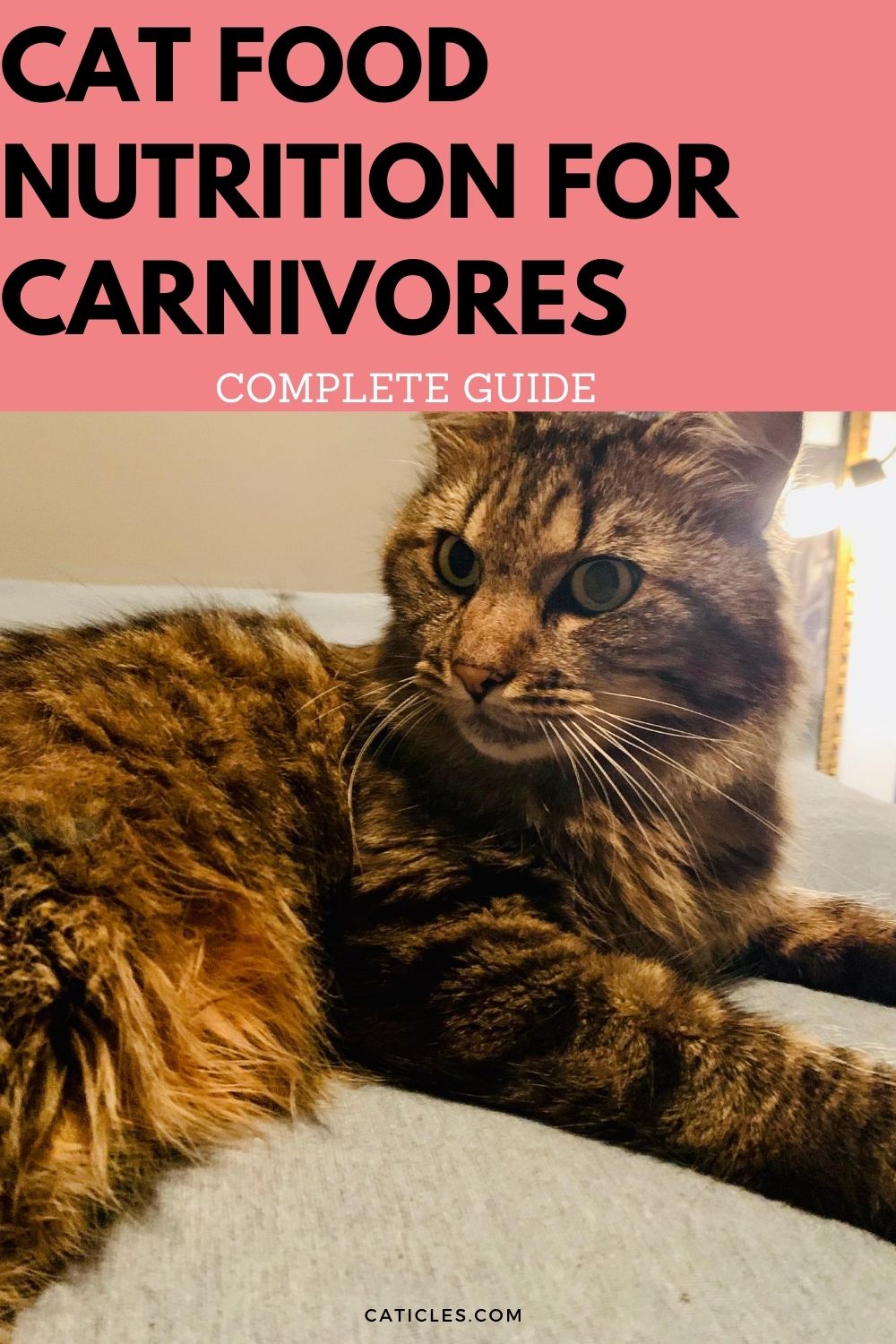
Potassium
Potassium deficiency symptoms include fatigue, poor growth, dry skin and loss of hair, dehydration, and lesions on the heart and kidneys.
Toxicity can result in high blood pressure and loss of calcium in the body. This is generally only an issue with cats who suffer kidney failure.
Sources:
- Rabbit
- Chicken
- Turkey
- Pork (not recommended for cats)
- Lamb
- Goat
- Ostrich
- Buffalo
- Egg
- Beef
- Salmon
- Halibut
- Haddock
- Sardine
Sodium
Deficiencies and toxicity levels of sodium are similar to potassium.
Sources:
- Shellfish
- Eggs
Magnesium
Too little magnesium will cause cardiovascular problems, seizures, hypertension, and weakness.
Excessive magnesium may result in diarrhea and gas.
Sources:
- Rabbit
- Chicken
- Turkey
- Pork
- Goat
- Ostrich
- Buffalo
- Egg
- Beef
- Salmon
- Halibut
- Haddock
- Sardine
Iron
Iron deficiencies result in anemia, fatigue, intestinal bleeding, poor stamina, nervousness, heart palpitations, and shortness of breath
Toxicity signs are weight loss, loss of appetite, and death.
Too much iron can contribute to reduced zinc absorption, heart disease, and the hardening of arteries.
Sources:
- Rabbit
- Chicken
- Turkey
- Pork
- Goat
- Lamb
- Ostrich
- Buffalo
- Egg
- Beef
- Salmon
- Halibut
- Haddock
- Sardine
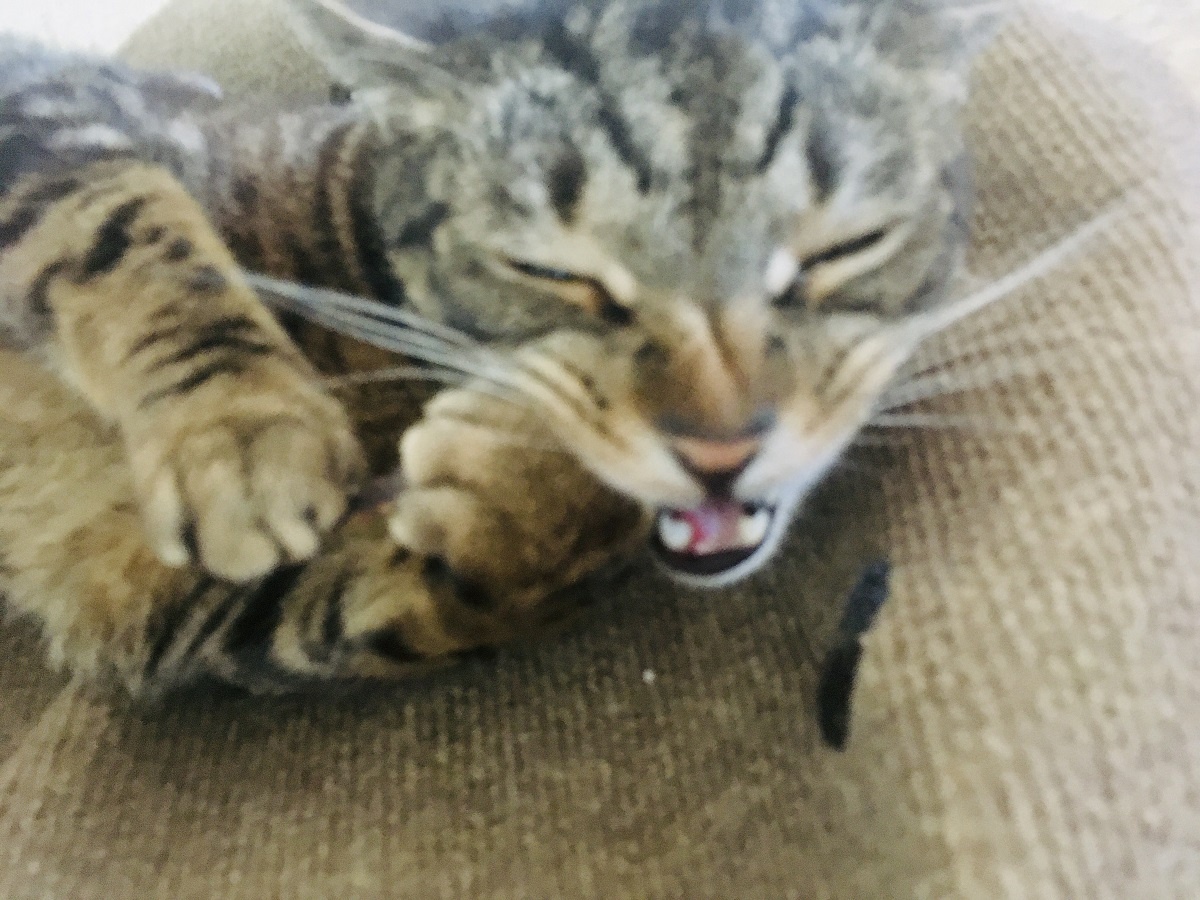
Copper
Deficiencies of copper result in loss of hair and skin color, anemia, and improper bone formation.
Liver damage is a result of toxicity.
Sources:
- Beef liver
Manganese
Manganese-deficient cats will have poor bone growth and abnormalities, issues with blood glucose levels, abortion, stiffness, and decreased reproductive performance.
Toxicity signs include loss of appetite, a marked increase in liver enzymes, and a reduction in blood pressure.
Sources:
- Blue mussels
- Green tripe
- Rabbit
- Chicken
- Turkey
- Pork
- Goat
- Ostrich
- Buffalo
- Egg
- Beef
- Salmon
- Haddock
- Halibut
Zinc
Zinc deficiencies cause skin problems and dry coat, excessive shedding, a weakened immune system, fading hair color, growth retardation, and poor reproductive performance.
Toxic levels of zinc result in vomiting and may interfere with the absorption of other minerals.
Sources:
- Liver
- Rabbit
- Chicken
- Turkey
- Pork
- Lamb
- Goat
- Ostrich
- Buffalo
- Egg
- Beef
- Salmon
- Halibut
- Haddock
- Sardine
Iodine
Unfortunately, there is not much information about this nutrient.
Sources:
- Kelp
- Fish
Selenium
Unfortunately, there is not much information about this nutrient.
Sources:
- Pork
- Beef
- Turkey
- Chicken
- Fish
- Egg
Vitamins
Vitamin A
Vitamin A deficiencies result in vision loss, blindness, skin disease, and growth retardation.
Toxic levels of Vitamin A cause visual changes, bone pain, and skin changes.
Excessive toxic levels may lead to liver damage and increased pressure on the brain.
Sources:
- Liver
- Salmon
- Mackeral
- Herring
- Egg
Vitamin D
A deficiency in Vitamin D causes lameness, poor mineralization of bone, rickets, loss in muscle mass, renal failure, heart disease, and cancer.
Toxicity results in abnormal levels of calcium and phosphorus in the blood, vomiting, weakness, depression, loss of appetite, increased thirst and urination, dark feces with blood, seizures, abdominal pain, drooling, weight loss, and constipation.
Sources:
- Egg
- Sardine
- Liver
- Kidney
- Salmon
- Tuna
Vitamin K
Signs of a deficiency include impairment of blood coagulation. This creates increased clotting time and hemorrhaging.
No toxicity signs have been reported.
Sources:
- Egg
- Halibut
- Haddock
- Sardine
- Liver
- Kelp
Thiamin (Vitamin B1)
Signs of deficiency include fatigue, irritability, poor memory, sleep disturbances, and abdominal pain.
Long-term deficiency may cause heart failure.
Toxic levels cause weakness and a headache. Excessive levels can cause a rapid, irregular heartbeat and low blood pressure.
Sources:
- Trout
- Tuna
- Mackerel
- Salmon
- Pork, liver
- Venison
- Chicken liver
Riboflavin (Vitamin B2)
Riboflavin deficiency symptoms include loss of appetite and weight, conjunctivitis, ocular lesions, and flaky dermatitis.
There are no overdoses reported.
Sources:
- Meat and organ meats
- Egg
Pantothenate (Vitamin B5)
A deficiency shows signs of fatigue, nausea, and headache. No toxicity signs have been reported.
Sources:
- Trout
- Salmon
- Tuna
- Egg
- Lean pork
- Beef
- Chicken
- Turkey
- Organ meat
Niacin (Vitamin B3)
Deficiency signs include a black tongue or sore mouth disease, inflamed gums, lips, and inner cheeks, weight loss, bloody diarrhea, and vomiting.
If a Niacin deficiency is not treated, it may result in death.
Bloody diarrhea and death will occur if your cat consumes 250x the recommended dosage.
Sources:
- Beef
- Fish
Pyridoxine (Vitamin B6)
A deficiency in Pyridoxine causes convulsions, anemia, itchy rashes, depression, confusion, and a weakened immune system.
Toxic levels will cause impairment of motor skills and balance and muscle weakness.
Sources:
- Organ meats
- Salmon
- Herring
- Halibut
- Tuna
- Turkey
- Chicken
- Lean pork
- Lean beef
Folic acid (Vitamin B9)
Folic acid deficiencies cause diarrhea, depression, confusion, anemia, and defects during pregnancy.
There are no toxicities reported.
Sources:
- Egg
- Beef liver
Biotin (Vitamin B7)
Deficiency symptoms include fur and skin conditions, eye discharge, small litter size, sometimes diarrhea.
Paralysis may happen if not treated.
No toxicity reported.
Sources:
- Egg
- Salmon
- Pork
- Sardine
- Liver
- Kidney
Choline (Vitamin B12)
A deficiency will cause diarrhea, weight loss, loss of appetite or eating more than usual, lack of energy, weakness, lack of muscle mass, seizures, excessive sleepiness, and death.
No toxicity reported.
Sources:
- Liver
- Heart
- Kidney
- Rabbit
- Chicken
- Turkey
- Pork
- Lamb
- Goat
- Ostrich
- Buffalo
- Egg
- Beef
- Salmon
- Halibut
- Haddock
- Mackerel
- Sardine
Final thoughts on cats needing meat
Cats need meat because they are obligate carnivores. They were designed to hunt, catch, and kill prey.
Cats eat prey raw and whole.
Whole prey provides the perfect balance of protein, amino acids, vitamins, minerals, and fatty acids.
Cats cannot utilize plant materials, and they have no use for carbs.
Meat-based proteins provide much more sustainable nutrients.
A BARF diet is food that cats love. This is the best way to naturally feed your cat.
Your cat should get nutrients from whole, natural foods.
Ready to switch to raw for a happier cat?
Grab my Switch to Raw Blueprint digital magazine and get the same plan that 564+ cat parents used to switch to a healthy premade raw diet easily and confidently.
